Twilight Imperium – Part 1: Someone set us up the bomb
In one of the recent great Tangapacolypses, I pulled the trigger on Twilight Imperium. On paper, this is exactly not my type of game. Complex, massive, and epically long.
However, it is currently #22 on Boardgamegeek, and my previous Tanga policy was, buy anything in the top 50.
So, when all 10 pounds of it arrived on my doorstep, I wasn’t really sure what to make of it. I let it perk for a week in the analog room before I moved it closer. Then it started talking to me. Open me up and check out all my bits… there’s lots of them, and they are pretty!
I did, and read the rules, and enthusiastically told Mrs. G about how cool they were, and she explained how cool they weren’t. So being the “best husband evar”, I have decided to hold a meeting of the “Players with Yourself Club” rather than inflict another game on her. (For now.)
First of all, there is a lot of setup for this game. There are tons of hexes and different kinds of cards and chits and bits. What follows is a chronology of the cool parts. Or at least the parts that I got to tonight.
There are ten races in the game. Each has a distinct personality and special abilities.
The ten races also have a homeworld they call their own.
Each player’s race is determined by randomly drawing a hex from the set.
There are several different kinds of hexes, other than the previously mentioned homeworlds. There are one-planet systems, two-planet systems, completely blank space, wormhole endpoints, asteroid fields, nebulae, and the supernova.
Now, the galaxy is created. “Mecatol Rex” is placed in the center, and the player’s homeworlds are arranged around it, two hexes from the center. This is a six-player layout. The rules allow for 3-6 players.
The remaining 32 tiles are shuffled and two are removed randomly
The rest are distributed to the players face down
Going clockwise from the starting player, the first ring is created. Each player places a tile from their hand one at a time.
Once the first ring is complete, the last player puts the first hex in ring two. Each player can place their hex any where they want, as long as it is in ring two.
Ring two is now complete.
On to ring three.
The final pieces are added, and the galaxy is finished! Note the strategic placement of the special tiles, creating buffer zones between the homeworlds.
Now we move on to the objective cards. These define how points will be earned throughout the game. There are ten cards of each type.
First, the Secret objective cards. Each player is given one of these cards, which is to be kept secret by the player. The remaining cards are returned to the box.
Next, the Stage II Public Objective cards are prepared. Four of the ten cards are taken and placed on the table. Amongst these cards is the Imperium Rex card, which mandates that the game ends as soon as it is revealed. This is a mechanism that forces the game to end in approximately ten turns.
On top of the four Stage II cards are placed six stage I public objection cards.
In my game, the Imperium Rex card is the ninth in the stack. Depending on fate, this card can be from the seventh to the tenth in the stack.
All that’s left is the individual player area. This contains the race card, the various status cards, the command chits, and the bits!
The collected plastic bits, representing battling units, both space and ground.
From here the game really begins. Stay tuned…
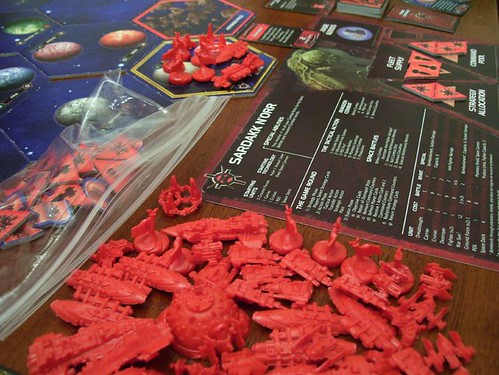
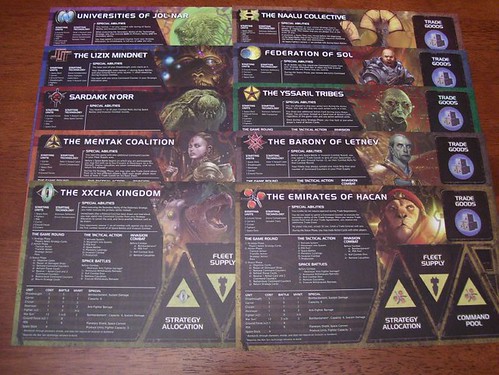
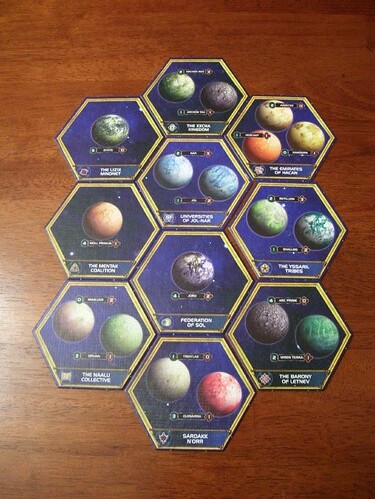
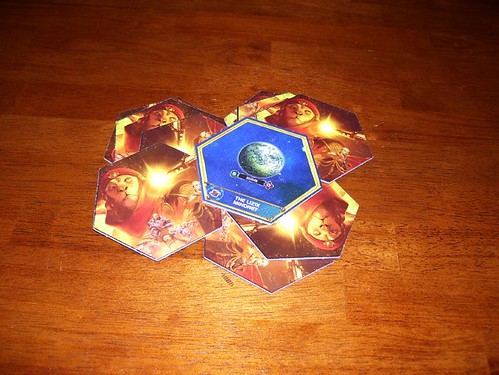
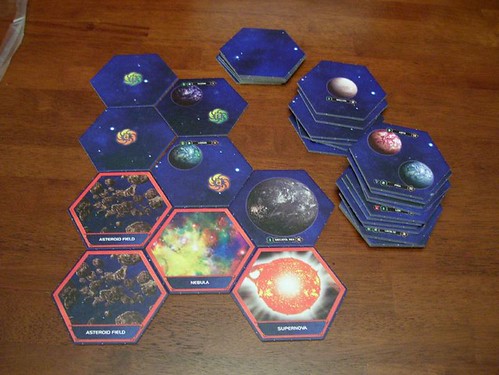
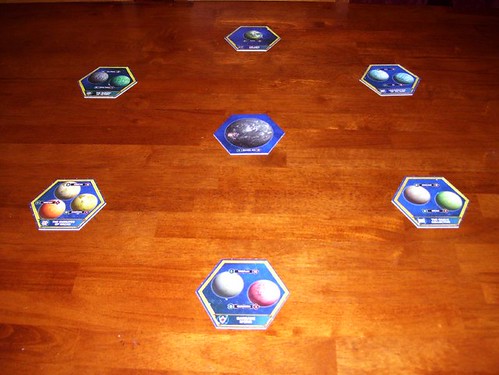


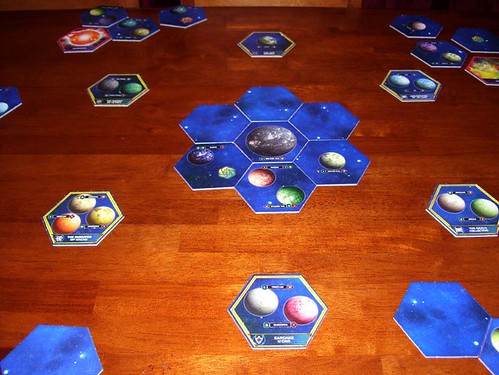
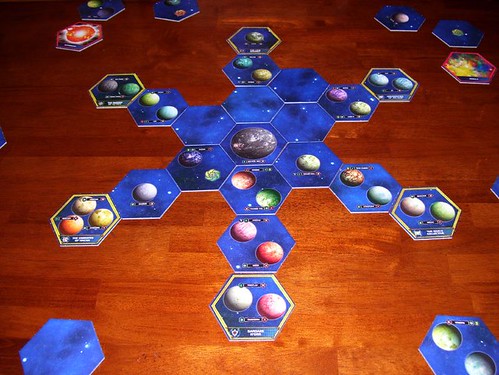
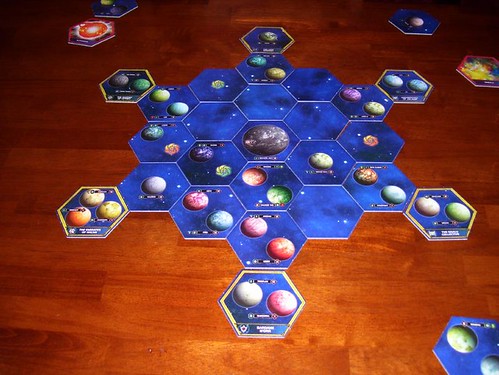
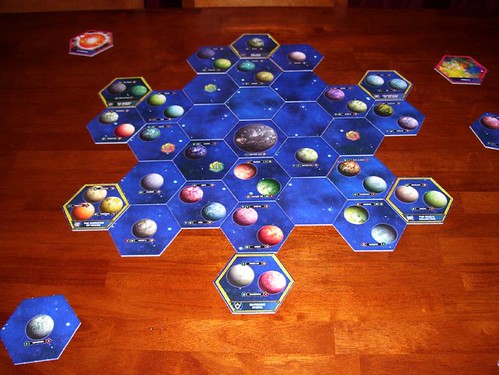
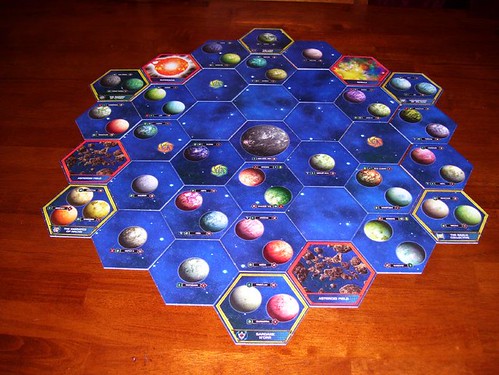
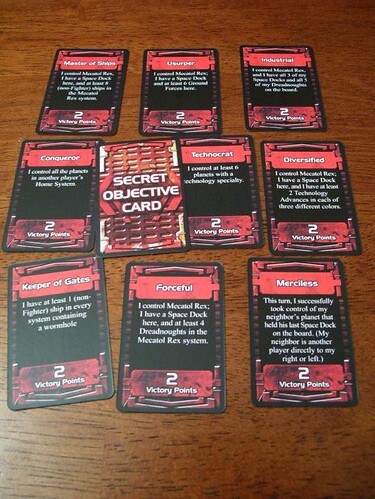
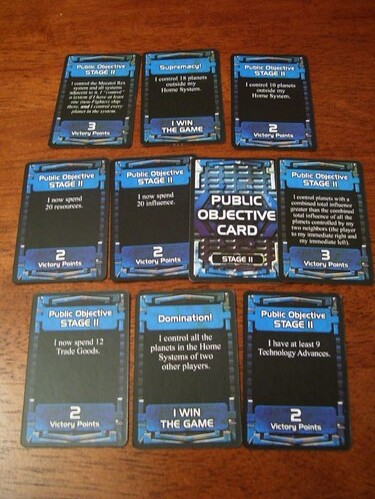
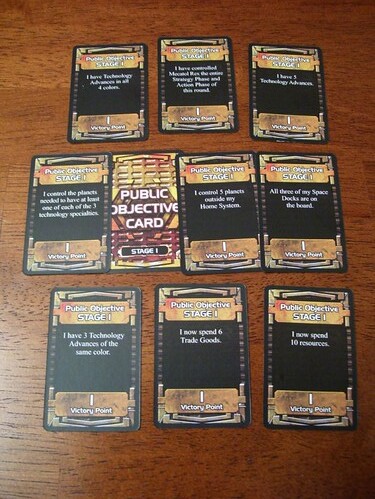
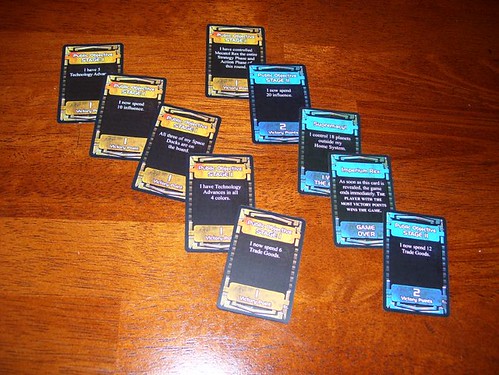
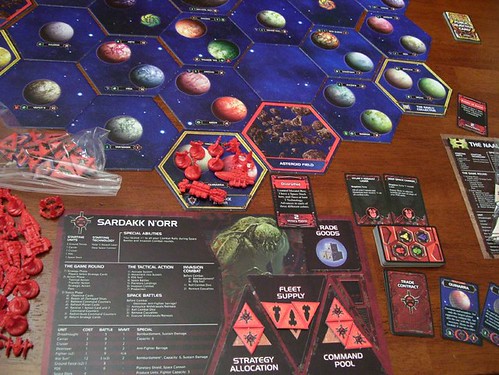
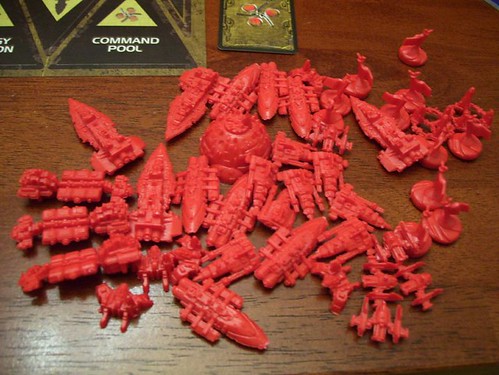


This game looks epic. Which could be a good bunker game if only you knew or worked with other nerds. Oh wait, you do. It seems like a really long/complex game which might be tough at a bunker party with all of the blinking and noises of the electronics that surround. If there were others committed to starting and finishing I’d join in.
October 4th, 2007 at 07:25Great jumpin’ holy smokes. I applaud you for trying this out, but I’d probably finish a three player game of Monopoly by the time you were done building the board and handing out the objective cards. 🙂
On the bright side, it looks like a board game version of Master of Orion, and that makes it A+ awesome in my book. My single friends would probably get together and play it over the course of a day, but as Markus said probably not for mixed company who can only socialize for a few hours at a time.
Looking forward to the next write-up.
October 4th, 2007 at 10:00I had never imagined this to be a Bunker Party game. I think this will need a night (or an night and and a day… and maybe another day.)
Anyway, I may just set up a game and let it sit in the analog room until it gets some eyeballs, then attempt to play one turn. (You will see from the upcoming posts that a single turn can go on for a while.) Anyone who is up for it after that can come over later, without the blinky lights.
October 4th, 2007 at 12:14S’pretty. And the kids are less likely to choke on the pieces than some of your other games. It would be fun to play next time I have 72hrs to spare. Maybe in 2020? 😉
October 4th, 2007 at 13:12This does look pretty cool, but probably something for my retirement.
October 4th, 2007 at 22:20